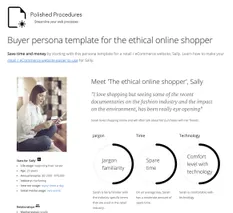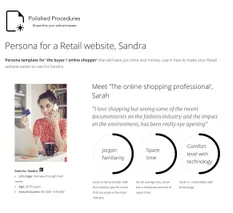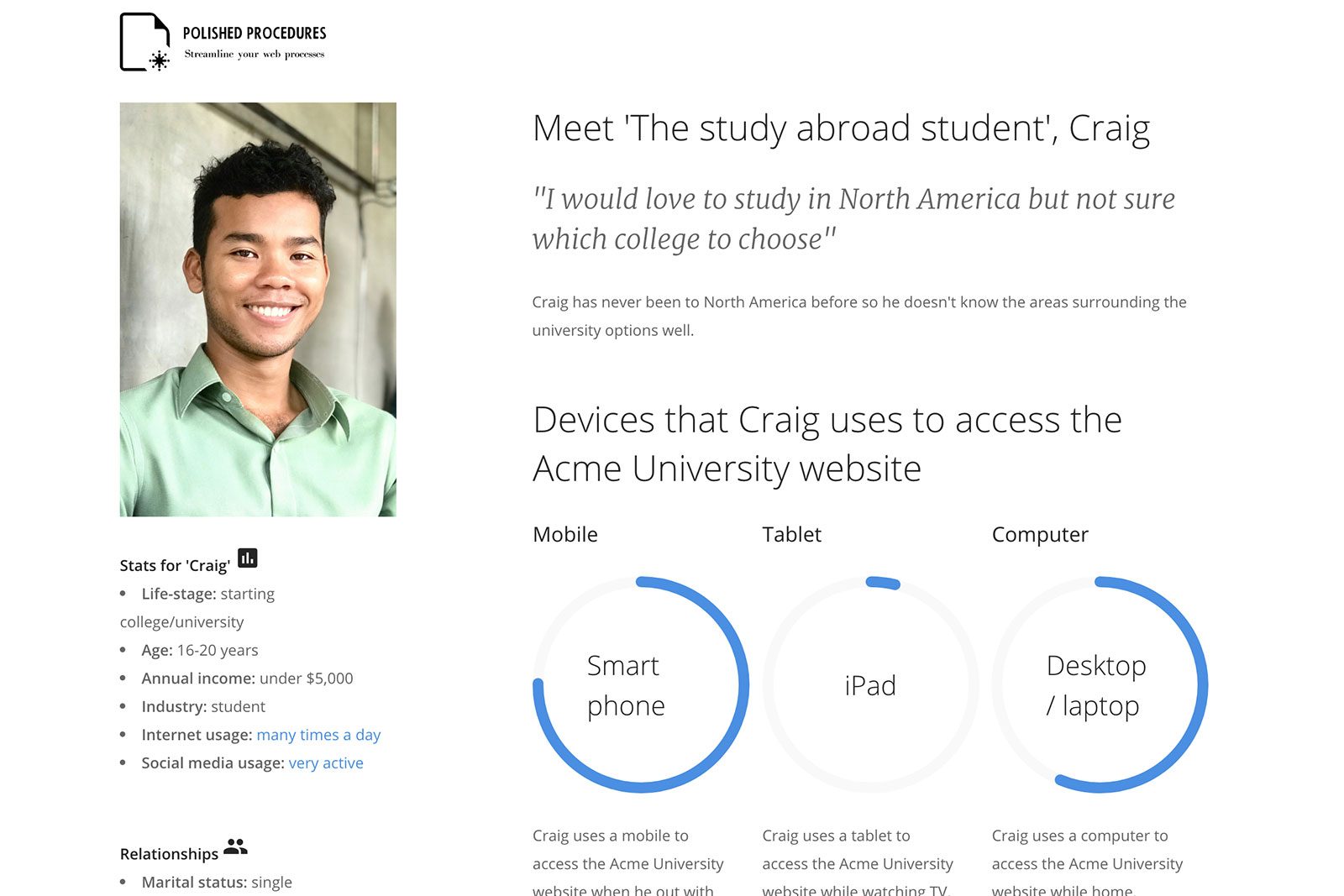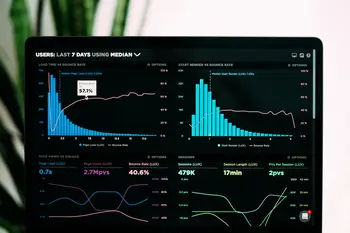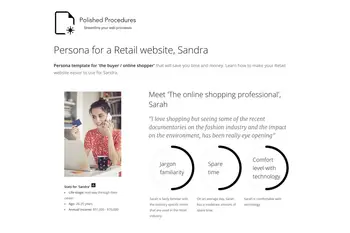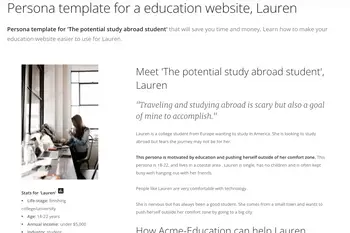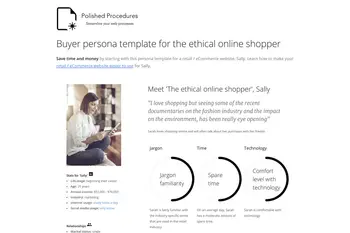
- Read time: 7 mins
- Tech level: low
- Key point: building personas lets you get to know your audience better, which helps you create more compelling campaigns and experiences for them
- Key resource: go straight to the 'persona generator tool'.
What is a persona?
Personas are a great way to start thinking about your target audience as real people rather than just numbers and dollar signs. A persona gives an identity to an ideal customer, telling you about their wants and aggravations, all of which is based on research.
By creating personas, you will:
A personas helps personalise the customer’s experience, and by taking the time and effort to show your customers that you understand them, they’ll be more likely to engage with your company.
Why start with a persona template?
Despite how beneficial personas are, they are clearly a lot of work. They can be incredibly time-consuming to create, and without proper design resources, your persona could end up not being particularly easy to understand, or worse, steer your colleagues in the wrong direction.
Fortunately, there’s a way for you to save time and costs.
We have a persona template for each industry. You can use a template as a starting point when creating a persona specific to your industry / sector. These cover all the core ingredients of an effective persona document. You could also go one step further and use our persona generator which actually guides you through the process of creating your new persona.
Latest proto-persona templates
See the three latest proto personas created by our persona generator tool.
Why use a persona generator?
Once you’ve compiled all of your data, you can use our industry-standard persona generator tool to build a strong, reliable persona with the click of a button. The personas produced using this tool are using a pre-designed template detailed, saving you precious time and effort, meaning you have more time to build the strategies that make personas so useful. By using this tool, you have the opportunity to build strong relationships with your customers in minutes rather than weeks.
What are the benefits of building a persona?
Once you have a validated persona, you’ll have the core ingredients you need to put together effective content strategies and marketing campaigns that will draw that targeted audience in.
The insights you get from the process of creating personas are invaluable. They can be used to engage your ideal audiences and ultimately increase conversions from website visitors to loyal customers and clients.
You get to learn from your persona’s goals and frustrations and let your ideal customers achieve their goals, alleviating their pain points and making their experience with your website better. This will motivate them to return to your website again and again because you’ve shown that you understand what they want and what they need to succeed.
What should my persona include?
If you didn’t want to use our persona generator and instead you’d like to start from scratch, then there is certain information that should always be included when building a persona.
The bare essentials should include your ideal audience’s:
Here is an example of a persona for an international student, Craig, created by using our persona generator tool.
When you’re done creating your persona, it should look something like Craig. All of the necessary information is included and the details are fleshed out as much as possible, leaving no room for confusion about how your company can help Craig. The next section will tell you exactly how to reach this fully realised persona.
What makes a strong persona?
Knowing the must-haves for your persona is a good place to get started on developing a proto-persona, but it’s important to dive deeper into the details in order to create a fully functional persona.
Here are the five elements that can help you validate a persona
1. Information on your target audience
To validate a persona, you need to compile real data on your target audience. This information proves that you’re not basing your user experience around who you think your audience is, but rather on facts.
You can gather this information by:
You should also feel confident in your knowledge about your customers to make valid assumptions about them, but you have to be sure to research them and prove them to be true.
2. Background
Your target audience’s background is essential when it comes to developing a persona, and can also be the most fun part to create. This is where you finally get to start building your persona by looking at the data you’ve compiled and putting it into action.
Start by giving your persona a name and a photo. This is crucial when it comes to empathising with your persona. What are their hobbies? What is their personality like? What are their fears? How do they spend their time?
Are they married? Do they have kids? What kind of job do they have? What is their income level? Are they active on social media?
All of this information and more can help bring your persona to life, and also helps you answer the question of why they have sought out your product or service.
3. Goals
In this context, goals refer to what the persona hopes to achieve. Since Craig is a persona for a potential international student, his goals include pursuing a global education and improving his English language skills.
Recognising your persona’s ambitions is essential because they show you how you can aid your customers in reaching their goals.
Remember, these types of goals are different from your persona’s website goals, or what your persona hopes to achieve by visiting the website. In this case, Craig’s website goals include finding information on study abroad opportunities in English-speaking countries.
4. Motivations
While goals focus on the desired end-result for a persona, motivations narrow in on what inspires them, what drives them to achieve their goals. For example, Craig is motivated by his desire for a better education and preparing for his future career.
5. Frustrations
Frustrations, or pain points, refer to what is slowing them down to stop them from achieving their website goals. In Craig’s situation, he may be frustrated by how expensive international study is, or that he can’t apply to English-speaking study abroad opportunities because the applications are using terms that he doesn’t understand.
Both motivations and frustrations help bring to light what you can do to eliminate your persona’s barriers and help them achieve their goals, turning them into loyal, happy customers.
Some helpful tips
When it comes to making personas, there are a few things to keep in mind beyond all of the compiled information. First, you’re going to want to create multiple personas. You shouldn’t be able to group all of your ideal website visitors under just one category, so you shouldn’t have just one persona.
Depending on the size of your company and how many users you have, you should have anywhere from 2-5 personas.
Second, since you’re going to all the trouble of making several personas, you should make sure that they are all distinctly different from each other. Personas that are unrelated will give you more diverse insights based on their varying backgrounds and goals, meaning you can appeal to a wider audience.




